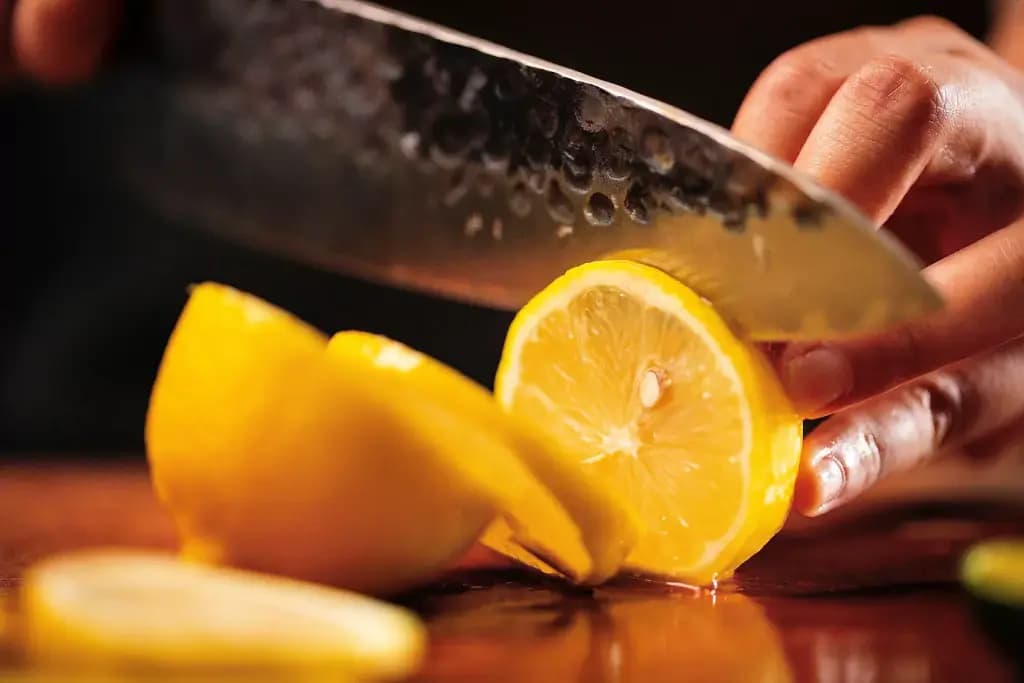

2025 SEPTEMBER 26
.Sophia Wasylinko
Japanese Kitchen Knives: Easy Ways to Remove Rust!
Japanese kitchen knives are some of the best tools in the industry, due to their impeccable craftsmanship and versatile use. However, when all your time in the kitchen is spent preparing meals, it’s easy to forget to properly clean your utensils.
Not even high quality knives from Japan are immune to rust. But don’t worry – a spot or two doesn’t mean “game over”! And you don’t need the fanciest gadgets to clean them, either. Here are some easy ways to remove rust from Japanese knives.
What makes Japanese kitchen knives unique?
We’ve talked about hōchō (kitchen knives) before, but here’s a quick rundown for readers new to our blogs. These utensils are made in the same Japanese tradition as katana, where carbon steel and iron are forge-welded together. With their sharp single-edged blade and lightweight handle which is easy to hold, they are used by home and professional chefs across the country and abroad.
Whether a gyuto (beef knife) or a yanagiba (willow leaf blade), they can quickly and efficiently slice through ingredients with minimal pressure. They can also perform other tasks such as peeling, trimming, and chopping, with the petty knife capable of more than one job. However, due to their structure, these chef knives are just as prone to damage, including chipping and rusting, as Western knives.
How do knives get rusty?
Rust forms on metal surfaces like a knife’s blade due to oxidation. To put it simply, this process is when steel reacts to moisture and oxygen, forming iron oxide. While it can happen due to improper storage, in most cases it occurs when hōchō aren’t wiped off. The most common culprits are water, acidic liquids like lemons, and salty foods such as cured meats.

Before we go any further, you’re probably wondering: why is it such a big deal to remove rust? Well, over time, the rusty metal will weaken and begin flaking. The degradation will lead to hazards, including chips and bacteria from the rust ending up in food and chefs hurting themselves from using blunt blades for meal preparation. Not to mention that a rusty knife looks terrible.
Are you looking for amazing knives and accessories? Check out ZAKU! ZAKU has authentic knives handmade in Japan for all of your culinary needs!

How do I clean them?
As daunting as it might seem, it’s actually easy to remove rust from a chef’s knife. We’ll go over specific tools and substances in the next section, but the steps are similar for all of them. First, put together a cleaning solution to soak the blade. Depending on the nature of the rust, this step could take anywhere from 30 minutes to two hours. Then, gently rub off the rust and rinse the blade with soapy water. Finally, wipe it thoroughly and store in a dry place.

We don’t recommend using complex chemicals, especially on a Japanese knife, since they can further corrode the blade. Avoid dishwashers, since the high-pressure jets and hot temperatures could damage the steel and the handle, especially if the knife is made of wood. Don’t soak the blades too long or rub on them afterwards too hard, especially if you’re using abrasives; you’ll run the risk of dulling or scratching the steel.
Are there any special tools or substances I need to maintain them?
If you’d like something specialized to clean your Japanese knife, we suggest buying a whetstone rust eraser made of rubber mixed with abrasive particles. And if your knife is older and fairly rusty, some Miracle Clean will do the trick. However, because the blade is more delicate, we recommend using a light and cleaner eraser.

But you don’t have to buy these items to clean off rust. You can achieve the same results with items already in your kitchen: white vinegar (which contains acetic acid), potatoes (oxalic acid, activated by mixing with baking soda or salt), and lemon or lemon juice (citric acid, also created by adding salt).
Why should I keep my Japanese kitchen knives clean?
Keeping Japanese blades in pristine condition is necessary for both food safety and longevity. While removing rust from Western knives is tricky enough, the hōchō’s delicate blades mean that chefs need to be more careful about not damaging them.
Properly cleaning your knives will keep them effective for many more years. And by using the hacks we’ve mentioned, you won’t have to spend extra money on special equipment (or worse, need to replace your knives). Of course, the best defense against rust is preventative action – never procrastinate drying your utensils!
Japanese kitchen knives are famous for being versatile and sharp, and they need regular maintenance to keep them that way. Rust can easily form due to lack of care, but it’s also easy to remove. Whether you use a heavy-duty whetstone eraser (with a light hand!) or the baking soda and salt in your pantry, saving your chef’s knife from oxidation is not too late. Try one of the mentioned techniques and see what difference it makes to your hōchō. How do you keep your Japanese knives clean? Share your trips in the comments.


















